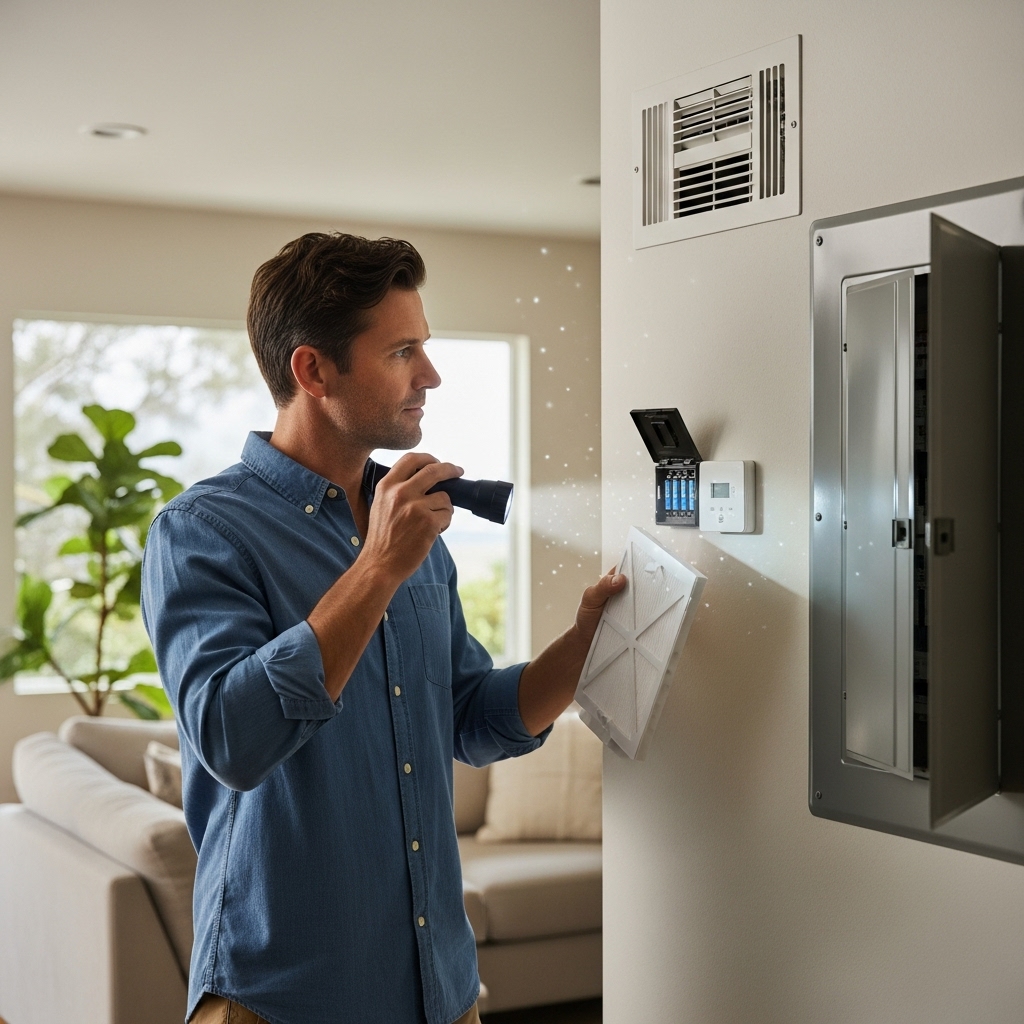When your home stops cooling on a warm Malibu afternoon, you want clear, practical steps you can take right away—without risking safety or causing damage. This troubleshooting guide is designed for coastal California homeowners who face a unique blend of salt air, foggy mornings, breezy canyons, and the occasional smoky day. You’ll learn which problems you can safely assess yourself, when to pause and call a professional, and how to prevent repeat issues. We start with quick checks and escalate to more involved observations, always mindful of the realities of coastal air conditioning systems and Malibu’s microclimates.
Before you begin, remember the basics: turn the system off at the thermostat if you suspect icing, electrical issues, or unusual sounds. Many problems get worse if the system is forced to run while compromised. When in doubt, stop and seek help from a licensed technician.
Start with the thermostat
Confirm that the thermostat is set to “cool” and the temperature is below current room temperature. Replace batteries if your model uses them. Verify that any “eco” or “hold” settings are not preventing the system from running. If you recently updated schedules, try a temporary manual setpoint to bypass programming while you troubleshoot.
Power and breakers
Cooling systems involve two power supplies: the main service panel breaker and the outdoor unit’s disconnect. Check the breaker first; if it has tripped, reset it once. If it trips again, do not continue restarting—call a professional. Outside, verify that the disconnect has not been pulled, and that fuses (if present) are intact. Look for signs of corrosion at the disconnect, which is common near the coast.
Airflow: the foundation of cooling
Restricted airflow causes poor cooling, freezing coils, and short cycling. Inspect your air filter and replace it if dirty. Open and clear all supply registers and confirm returns have at least several inches of unobstructed space. Vacuum dust from grilles. If airflow improves and cooling returns, you may have caught the problem early.
Is the outdoor unit running?
With the system calling for cooling, listen outside. Do you hear the fan and a steady compressor hum? If the fan runs but the compressor does not, shut the system off and call for service. If neither runs, recheck power and the disconnect. Look for visible debris on the coil and around the base. Clear leaves, seeds, and grasses for at least two feet in all directions. Near the ocean, salt residue can make the coil look dull or filmed; that buildup reduces heat transfer and can cause poor performance.
Ice on lines or coil
If you see frost on the copper lines or the indoor coil, turn the system off and set the fan to “on” to melt ice faster. Icing usually points to airflow restrictions or low refrigerant. Replace the filter and inspect for blocked returns. If ice returns after thawing, call a professional—running iced can damage the compressor.
Water around the air handler
Moisture near the indoor unit can indicate a clogged condensate drain. If you have a cleanout, pour a cup of white vinegar into the drain and allow it to sit. Clear standing water from the pan if accessible and safe. Verify that the float switch, if installed, has not tripped due to blockage. Persistent water requires service to avoid damage.
Strange sounds and what they mean
- Rattling: Often a loose panel or fastener. Tighten accessible screws with power off.
- Buzzing without a start: Could be an electrical or start component issue. Do not keep trying to start the system; call a professional.
- Grinding or squealing indoors: Potential blower or motor bearing issue. Shut down and schedule service.
- Clicking on and off repeatedly: Short cycling due to airflow, thermostat placement, or protection circuits. Investigate filter and airflow first.
Odors and air quality clues
Musty smells often come from a dirty drain pan or standing water. A burning smell may indicate electrical issues—shut the system down immediately. A sweet, chemical-like odor could suggest a refrigerant leak; do not attempt to diagnose this yourself. During smoky periods, filters load quickly and may need replacement even after a single bad air day.
Performance checks without tools
- Supply temperature: After 10–15 minutes of runtime, the air from supply registers should feel noticeably cooler than room air. If barely cooler, suspect airflow or refrigerant-side issues.
- Outdoor exhaust: Warm air should be blowing out the top or sides of the outdoor unit. If air feels cool, heat rejection is compromised—often a dirty coil or non-running compressor.
- Cycle length: Extremely short cycles on mild days can indicate oversizing or a control setting; long, struggling cycles in heat may indicate airflow or refrigerant problems.
Coastal-specific checks
In Malibu, outdoor cabinets and coils contend with salt and mist. Gently rinse the outdoor coil with a low-pressure hose, directing the water parallel to the fins. Ensure adequate clearance. Inspect line-set insulation for UV cracking and replace if degraded. Check that the outdoor unit is level—settling pads can stress refrigerant piping and shorten compressor life.
Thermostat placement and settings
Thermostats near sunny windows or kitchen areas can misread conditions and short-cycle the system. Use modest setbacks and avoid fan “on” during humid or foggy periods, which can re-evaporate moisture from the coil and make rooms feel clammy. If your home has wide swings between rooms, ask about zoning or better return-air strategies.
When to stop and call a professional
- Repeated breaker trips or visible arcing
- Icing after replacing filters and clearing airflow
- Compressor starts and stops within seconds repeatedly
- Persistent water at the air handler despite clearing the drain
- Any suspicion of a refrigerant leak
These problems require instruments, parts, and training. Attempting DIY repairs on high-voltage components or refrigerant circuits can be dangerous and can void warranties.
Preventing the next breakdown
- Replace filters on a schedule that matches Malibu’s conditions; monthly checks are smart during peak season.
- Rinse the outdoor coil several times a year if you are close to the ocean.
- Keep the area around the outdoor unit clear and ensure the pad is level.
- Schedule annual professional maintenance to verify airflow, electrical health, and refrigerant performance.
Somewhere around the middle of your busy season, step back and refresh the basics of how air conditioning works: cool, clean coils; unimpeded airflow; and accurate controls. Returning to these fundamentals prevents a majority of nuisance calls.
Frequently asked questions
Q: Why does my system cool poorly on foggy mornings? A: High humidity and low sensible loads can cause short cycles and clammy air. Use “auto” fan mode and modest setpoints; avoid continuous fan operation during damp periods.
Q: Should I turn my system off during smoky days? A: Keep windows closed, run the system to filter indoor air, and replace filters as needed. If smoke is heavy, consider a higher-efficiency filter if your system can handle it.
Q: Is rinsing the outdoor coil enough? A: Gentle rinsing helps, but annual professional coil cleaning and electrical checks provide deeper protection, especially near salt air.
Q: How do I know if it’s a thermostat issue? A: If the equipment works when you temporarily bypass schedules or if relocating heat-producing devices away from the thermostat resolves short cycling, placement or programming may be the culprit.
Q: What temperature difference should I expect? A: Many systems deliver a noticeable temperature drop at the supply registers after several minutes of runtime. If not, suspect airflow or refrigerant-side issues and call for service.
Restore comfort with confidence
If your system still struggles after these steps, bring in a qualified technician to diagnose and resolve the issue. Share the observations you made using this guide to speed the process. And if you want a straightforward primer on selection, maintenance, and performance for Malibu homes, connect with a local pro who can help you get the most from modern air conditioning technology and keep your home comfortable in every season.

